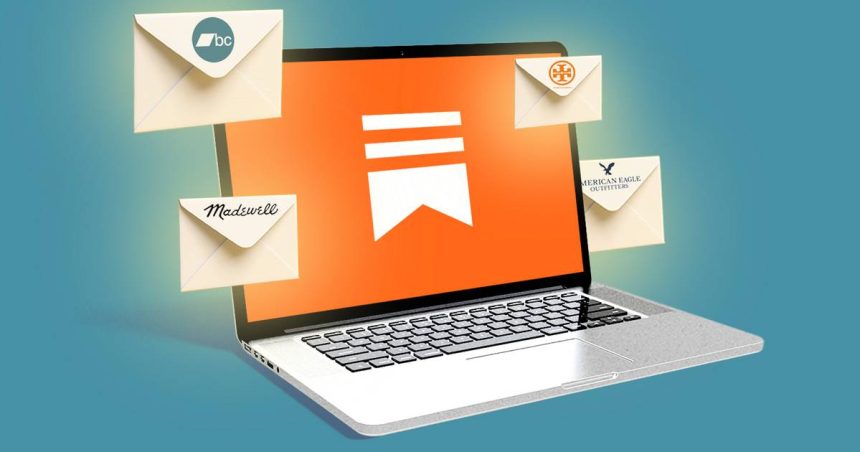Start spreadin’ the news. While some brands are using Substack partnerships for affiliate marketing, others have opted to take it a step further and are creating newsletters of their own.
In recent months, Madewell, American Eagle, Billboard, Rare Beauty, The RealReal, Bandcamp, and Tory Burch have all launched newsletters on Substack. At the same time, Substack has courted brand founders, including fashion brand owners Clare Vivier of Clare V. and Rebecca Minkoff, to build on the success of other founder-led newsletters, like that of Melanie Masarin, the founder of drink brand Ghia, according to Christina Loff, head of lifestyle on the Substack partnerships team.
“We’re always looking for bringing the most important, influential voices to the platform,” Loff told us.
For both Substack and brands, a newsletter can serve as a gathering place for a community of brand loyalists who can engage with long-form content for entertainment, advice, and even behind-the-scenes content.
With that said, Loff cautioned against viewing the newsletter as just another form of email marketing. That’s not just sage advice—that’s according to Substack’s own content guidelines, which specify that the platform is intended for “high-quality editorial content, not conventional email marketing.”
Story time
Bringing marketing copy and images to Substack newsletters doesn’t work not just because it violates the platform’s guidelines, Loff told us: it’s also likely that people wouldn’t subscribe to that kind of newsletter in the first place.
What readers are looking for instead, she said, is a “deeper story” or insider information, ideally told from a first-person perspective.
“The best way for a brand to show up is if there’s a founder or if there’s that person behind it, because that’s what Substack is about,” Loff said, adding that “people trust people more than brands.”
One of those people is Vivier, who started her Substack, La Vie de Clare V., in April 2024. Vivier said the format has been a natural fit because Clare V. is a founder-driven brand. In her newsletter, she shares content like the inspiration behind some of her designs, and she said she views it as a longer-format, behind-the-scenes look for her community rather than exclusively a marketing vehicle.
“Substack is a way that you can get a little bit more personal,” she said. “I also just love sharing my design process and things that inspire me and stories of my travels.”
For less founder-forward brands, some have recruited known writers to spearhead their Substacks. American Eagle brought on Casey Lewis, who writes her own youth-culture newsletter, After School, to guest-edit the brand newsletter Off the Cuff. The RealReal, meanwhile, opted for a more Gossip Girl approach, hiring a fashion writer who pens the brand’s newsletter anonymously and signs off with, “XOXO, The RealGirl.”
To support the second iteration of its “No Ordinary Love” campaign that kicked off in May, Hinge released five love stories on Substack, as well as in print, that were written by a cast of writers, including Hung Up newsletter writer Hunter Harris and The Bi Monthly writer Jen Winston.
“What I like about that is they’re giving another monetary opportunity to these writers that are already on Substack, and they’re working with trusted voices already on the platform,” Loff said. “It’s really smart.”
Get marketing news you’ll actually want to read
Marketing Brew informs marketing pros of the latest on brand strategy, social media, and ad tech via our weekday newsletter, virtual events, marketing conferences, and digital guides.
Jackie Jantos, CMO of Hinge, told us that the campaign falls into the brand’s broader creator marketing strategy as a way of reaching Gen Z via some of their favorite writers.
“Part of our creator and marketing strategy is leveraging creators who have far more authenticity and credibility with our core Gen Z audience in order to tell Hinge stories,” Jantos said. “We’re doing the same through Substack here.”
A place to gather
For brands and brand founders, the primary benefit of creating a newsletter is to build community. Viver told us she doesn’t look at KPIs or follower counts on her Substack (although she has noticed that certain content, like posts about interior design, has led to more sign-ups and likes). Primarily, she said, she’s responding to comments.
“It’s really about personal engagement,” she said. “That’s what’s much more important.”
Substack followers tend to fall into the category of what Vivier calls brand “superfans,” since they have to opt into getting a newsletter sent to their inboxes.
“Those are the people who are your ride-or-die evangelists who are going to go out and talk about your brand and tell their friends and family about it,” she said.
That community-focused approach can make Substack feel like “a positive place,” Liz Hanna, connections director at VML, told us. “It’s not the dregs of the internet, like X, or even on Reddit, where people can really get nasty.” (Of course, that all depends on where you look. Substack has faced criticism for its anti-moderation stance, which has allowed for certain forms of hateful content on the platform.)
For brands interested in building out brand newsletters on Substack, Hanna said the focus should be on leaning into a niche and building an ownable audience rather than building up huge audiences or fielding direct product sales.
“[Substack] is a great place to have a two-way conversation and really get to know your audience and find out what they want from your brand,” Hanna said. “Ultimately, that can even influence your future products or your marketing.”
The new blog?
Hanna called newsletters “the new blog,” and Vivier told us she was initially drawn to Substack because her brand “really started with a blog” back in 2007. But while it’s easy to compare brand editorial content on Substack to the blogs of the early 2000s, Loff said it’s not Substack’s goal to revive that era. For one, she said the platform does not currently provide monetary opportunities for brands.
Still, there is something nostalgic about long-form content reemerging in the age of short-form video and endless scrolling.
“Something that I’m really excited about is how Gen Z are engaging with the written word and engaging with newsletters,” Jantos said. “It’s a medium for exploring content in a slower way and really engaging and putting a bit more effort into what you’re reading.”
But not every company has a story to tell, Loff cautioned.
Ultimately, she said, “We don’t want Substack to be flooded with brands.”
Read the full article here









